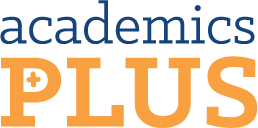At a time when attention disorders are at an all-time high, incorporating movement into learning is more crucial than ever. There are countless, research-based benefits to adding movement to learning and how movement in general can benefit all children in all aspects of life!
In a recent study out of the University of Central Florida, researchers found that children with ADHD performed best when they were able to move around or wiggle in their seat. Mark Rapport, one of the study’s authors, has also conducted previous research in which he found that “the excessive movement that’s a trademark of hyperactive children—previously thought to be ever-present—is actually apparent only when they need to use the brain’s executive functions, especially their working memory”. If we think about children in a classroom, they are continuously using their working memory! It is used for tasks such as remembering the teacher’s instructions and following through, completing multi-step math problems, copying from the board, learning to read and sounding out new words, and remembering what they are supposed to be paying attention to! With their working memory in almost constant use, having the ability to wiggle in their seat can do wonders for these children in the classroom.
In addition to boosting attention in the classroom, incorporating movement into study time and learning can help children retain and recall information more efficiently. The cerebellum, the part of the brain responsible for motor control, is densely packed with neurons and is also responsible for memory and attention. How interesting that the part of the brain that controls movement is also the area responsible for learning! When children incorporate movement into learning, multiple neural circuits are working at once, strengthening connections and increasing cognitive efficiency!
At Academics Plus, we love to incorporate as much movement into our sessions as possible. Whether it’s ball bouncing, doing cross crawls, turning our activity into a game of basketball, “marching out” math facts on the stairs, or running the hallway for a stretch break, movement increases retention for our students and allows them to stay more focused. Ball bouncing is a great activity that is easy to incorporate at home as well. Nearly all academic material can be recited out loud and bounced out on the syllables. For example, a key historical date could be bounced out“Ju-ly Fourth In-de-pen-dence Day”. Remember, if a piece of information can be repeated aloud, it can be “bounced out”!
Other exciting at-home ideas can be having your child act out an event in the book they’re reading, reenacting a historical event from social studies, spelling and forming the letters of their spelling words with their whole body, or measuring items around the house with their arms, legs, feet, hands, or fingers! When learning is fun and interactive, it not only boosts a child’s memory, but also their confidence and engagement in the material, allowing them to make great gains emotionally, cognitively, and academically!
